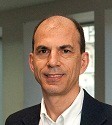- unknown (b.)
Bio/Description
A senior member of the technical staff at the Software Engineering Institute (SEI) where he works to develop and communicate effective methods and practices for software architecture, his areas of interest include software architecture design, description, and evaluation, software architecture life-cycle integration, architecture-centric development, and product line practice. Prior to joining the SEI, he was a member of the software architecture program at Siemens Corporate Research (SCR), where he balanced research in software architecture with work in designing and evaluating large-scale systems. He earned a Ph.D. in Computer Science from Carnegie Mellon University. He is a co-author of ?Applied Software Architecture and Documenting Software Architectures: Views and Beyond?, published by Addison-Wesley with Rick Kazman and Mark Klein. In addition he has co-authored several other publications including, but not limited to: ?Applied Software Architecture?, Addison-Wesley, 2000 with Christine Hofmeister, Robert L. Nord and Dilip Soni; and ?A Life Cycle View of Architecture Analysis and Design Methods? (CMU/SEI-2003-TN-026). Pittsburgh, PA: Software Engineering Institute, Carnegie Mellon University, 2003 with Rick Kazman and Mark Klein; and "Describing Software Architecture with UML," In Proceedings of the TC2 First Working IFIP Conference on Software Architecture (WICSA1), San Anotonio, Texas, pp. 145-159, February 22-24, 1999. Patrick Donohoe (ed.), Software Architecture, Kluwer Academic Publishers, 1999 with Christine Hofmeister and Dilip Soni. He also lectures on architecture-centric approaches. In 2011, the Association for Computing Machinery (ACM) recognized him as an ACM distinguished scientist. The ACM bestows this honor on those members with at least 15 years of professional experience who have made significant accomplishments or achieved a significant impact on the computing field. Among the recipients of this honor are computer scientists and engineers from leading corporations, research labs, and universities.
-
Gender:
Male -
Noted For:
Developer of effective methods and practices for software architecture -
Category of Achievement:
-
More Info:


